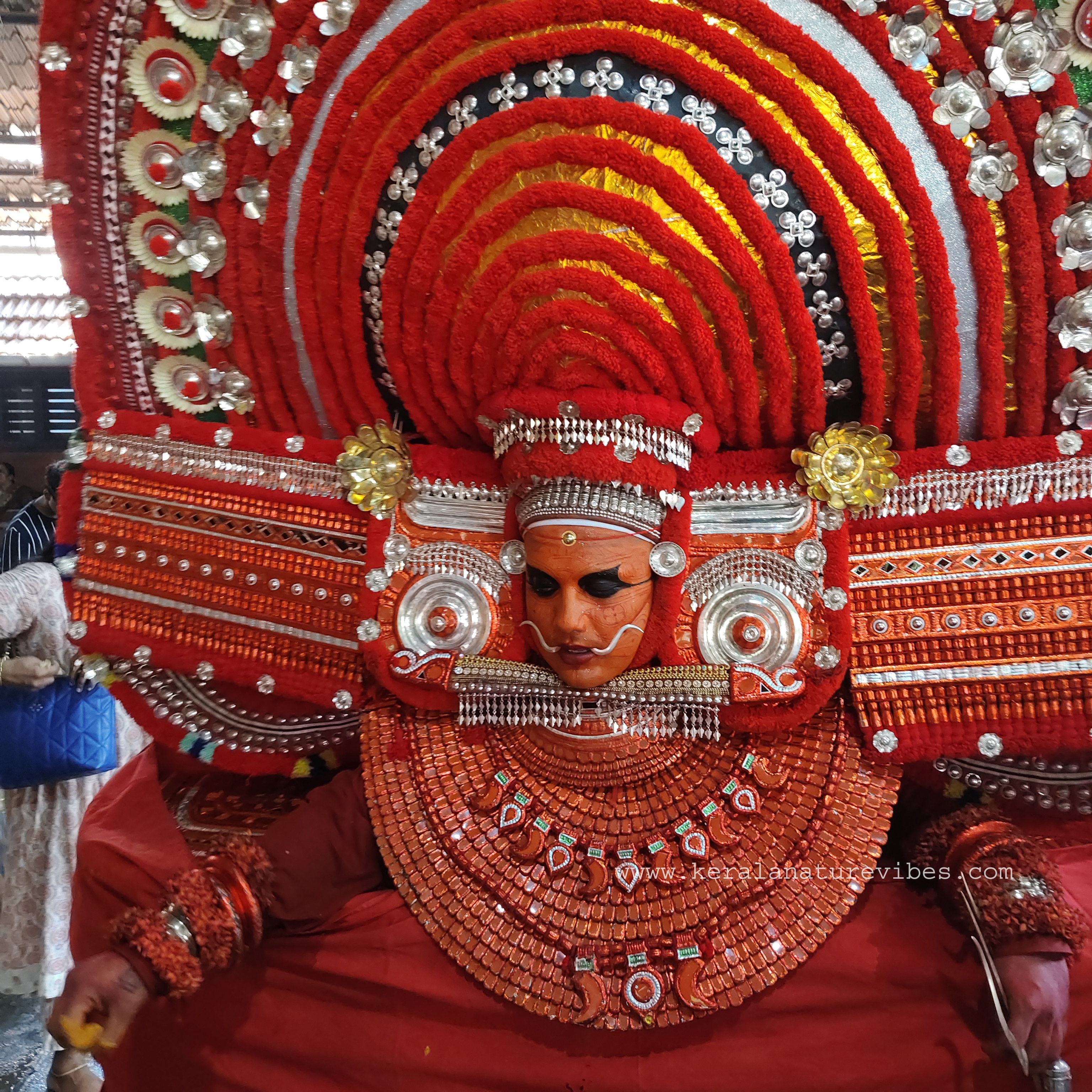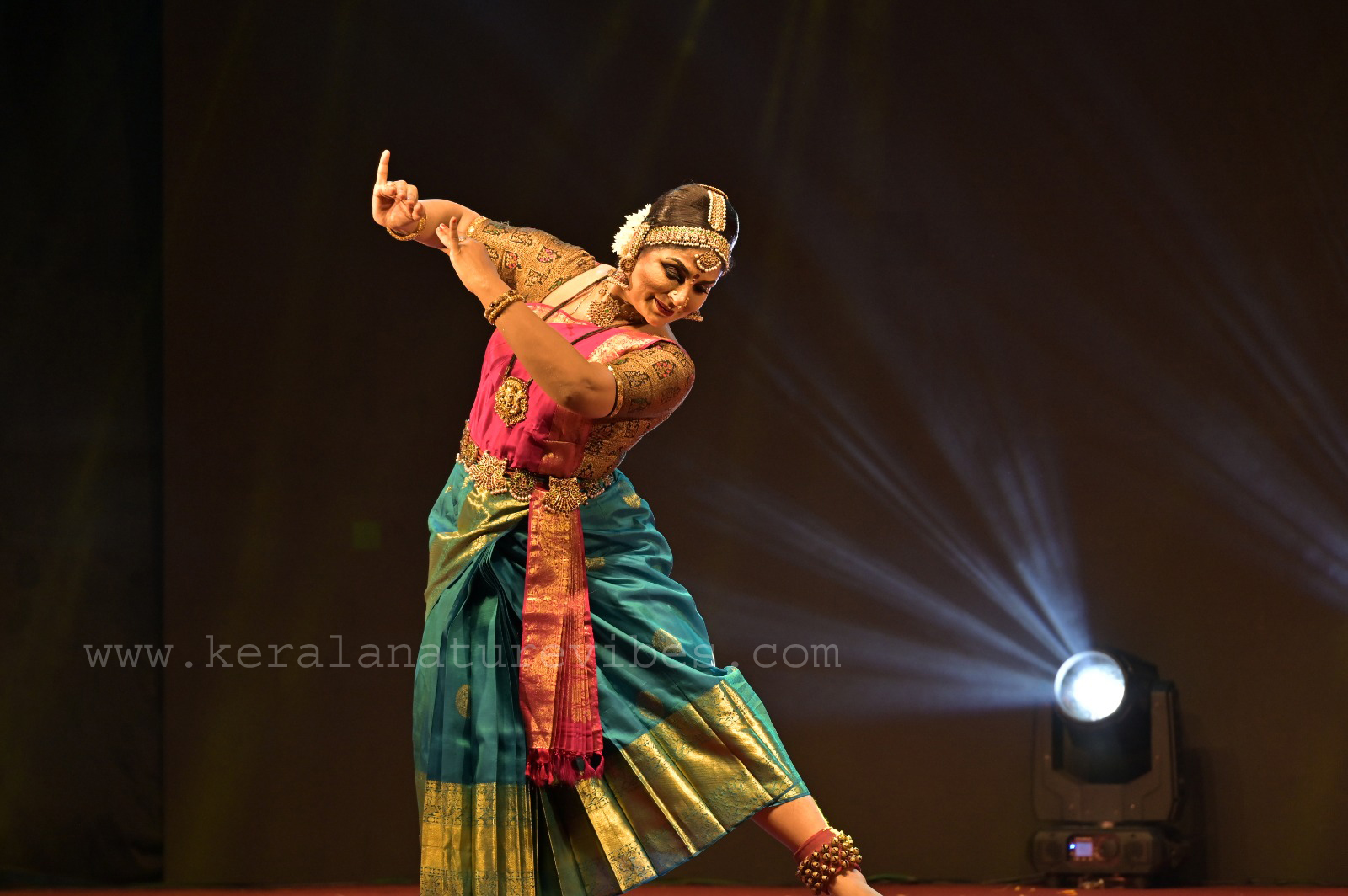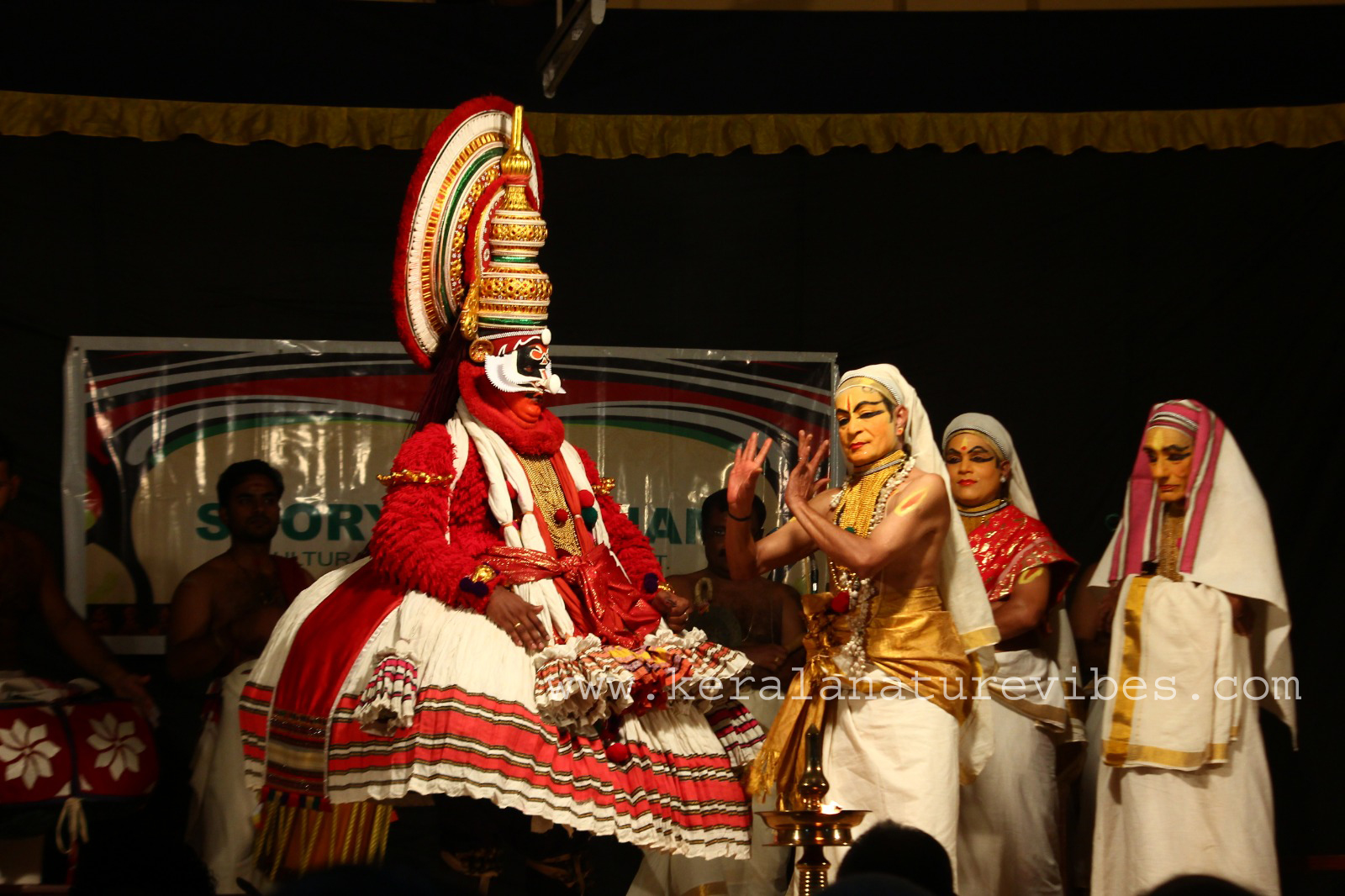The Vibrant Culture of Kerala: A Symphony of Arts and Traditions
Nestled between the Arabian Sea and the Western Ghats, Kerala is more than just a land of scenic backwaters and lush greenery—it is a vibrant cradle of culture, tradition, and humanity. Known as "God’s Own Country", Kerala’s cultural heritage is a rich mosaic woven through centuries of history, spiritual depth, and communal harmony.
The people of Kerala are known for their warm hospitality, affectionate nature, and deep respect for traditions. Whether in the bustling towns or quiet villages, visitors are welcomed with genuine smiles and heartfelt care. This innate sense of openness and compassion is at the heart of Kerala’s identity.
From the rhythmic beats of ritual arts to the colorful spectacles of temple festivals, from ancient martial arts to soulful classical music, Kerala’s culture reflects a seamless blend of spiritual devotion and artistic brilliance. Its culinary richness, traditional attire, and distinctive customs tell stories of a land proud of its past and inclusive in its spirit.
This section will take you on a journey through the many facets of Kerala’s cultural legacy—including its famed festivals, ritual arts, unique food habits, traditional garments, and more. Come, explore the living traditions and timeless warmth of Kerala, where culture is not just preserved but celebrated in everyday life.
Festivals of Kerala: Celebrations That Unite Culture and Spirit
Festivals in Kerala are vibrant reflections of its cultural diversity, religious harmony, and agrarian roots. Whether rooted in temple traditions, seasonal cycles, or social gatherings, each celebration brings communities together in joyous expressions of faith, art, and heritage.
The most iconic among them is Onam, Kerala’s grand harvest festival. Celebrated by Keralites across all religions, Onam commemorates the return of the legendary king Mahabali. The ten-day festival features flower carpets (Pookkalam), traditional feasts (Onam Sadhya), boat races, and folk dances—offering a vivid glimpse into Kerala’s agrarian soul and communal harmony.
Another major celebration is Vishu, marking the Malayalam New Year. It is a festival of new beginnings, where families greet the day with the auspicious sight of the Vishukkani—a ceremonial arrangement of fruits, grains, and gold symbolizing prosperity.
Kerala’s temple festivals are equally mesmerizing. Events like Thrissur Pooram, known as the “mother of all poorams,” showcase a majestic parade of caparisoned elephants, thunderous percussion ensembles, and dazzling fireworks. Such festivals are not only religious but also magnificent cultural displays enjoyed by people from all walks of life.
The boat races of Kerala, especially the Nehru Trophy Snake Boat Race held in Alappuzha, are thrilling spectacles rooted in local pride and teamwork. Hundreds of rowers move in perfect rhythm, cheered on by thousands along the banks—turning backwaters into arenas of festive energy.
In addition to Hindu festivals, Kerala also celebrates Christmas, Eid, and Easter with great enthusiasm, reflecting the state’s religious inclusivity and multicultural spirit. Churches, mosques, and temples across the state come alive with lights, music, and food, strengthening social bonds among communities.
In Kerala, festivals are not just events—they are experiences that blend devotion, artistry, and collective joy. No matter the time of year, you’ll find a celebration that reveals the heart and soul of this culturally rich land.
Ritual Arts of Kerala: Sacred Performances Rooted in Tradition
Kerala's ritual arts are among the most vibrant and spiritually charged expressions of its cultural heritage. Deeply intertwined with temple worship, folk beliefs, and ancestral customs, these art forms go beyond performance—they are acts of devotion, storytelling, and community bonding.

In Central Kerala, Padayani is celebrated with fiery rhythms, giant masks, and energetic group performances. Held in temple courtyards, especially during the festival season, Padayani blends martial movements with mythological storytelling, invoking divine energies and ancestral spirits.
Mudiyettu, recognized by UNESCO as an Intangible Cultural Heritage, is another temple ritual drama centered around the myth of the goddess Kali and her battle with the demon Darika. Performed annually in Bhagavathy temples, it reflects the power of good over evil through dance, music, and dramatic visuals.
Other sacred traditions like Thira, Koodiyattam (Sanskrit theatre), and Ayyappan Vilakku further illustrate how Kerala integrates art, worship, and community into cohesive cultural experiences. Each of these forms is passed down through generations, performed with deep reverence, and celebrated by local communities.
These ritual arts are not just performances; they are living traditions that preserve Kerala’s mythologies, spiritual values, and local histories. Experiencing them is like stepping into a sacred narrative where the boundary between the material and the mystical disappears.
Other Art Forms of Kerala: Grace, Drama, and Rhythm in Motion
Beyond its ritual performances, Kerala is also home to a rich array of classical and folk art forms that reflect the state’s aesthetic depth and cultural refinement. These art forms combine literature, music, movement, and expression to create deeply immersive experiences for both performer and audience.
Mohiniyattam, the classical dance of Kerala, is known for its graceful, flowing movements and emotive expressions. Traditionally performed by women, the dance portrays stories from Hindu mythology with elegance and poise.

Dressed in white and gold, dancers move in slow, circular patterns, embodying the enchantress spirit of "Mohini"—the female avatar of Vishnu.
Kathakali is Kerala’s most iconic dance-drama form. It combines elaborate costumes, bold face makeup, precise hand gestures (mudras), and expressive eye movements to enact stories from epics like the Ramayana and Mahabharata. Kathakali performances are often held overnight in temples and cultural venues, offering a blend of theater, dance, and music that is visually stunning and emotionally powerful.

Koodiyattam, one of the oldest surviving Sanskrit theatre traditions in India, originated in Kerala and has been recognized by UNESCO as a Masterpiece of the Oral and Intangible Heritage of Humanity. Performed in temple theatres, it is known for its slow-paced, stylized acting and rich symbolic gestures.
Folk art forms like Ottamthullal, Chakyar Koothu, and Margamkali add humor, social commentary, and religious devotion to Kerala’s artistic landscape. Each of these forms developed within specific communities and continues to be practiced in festivals, cultural programs, and temple events.
Whether sacred or secular, these art forms keep Kerala’s creative spirit alive. They serve as a bridge between past and present, giving voice to myth, history, and human emotion through movement, melody, and rhythm.
Traditional Dress of Kerala: Elegance Woven in Simplicity
Kerala’s traditional attire reflects its cultural values—grace, simplicity, and a deep connection to nature and heritage. Made primarily from handwoven cotton and fine silk, the garments are designed to suit the tropical climate while exuding timeless elegance.
For men, the classic outfit is the Mundu—a white or off-white garment worn around the waist, often with a golden border known as Kasavu. It is usually paired with a cotton shirt or a traditional upper cloth called Melmundu. The Mundu is worn with pride during festivals, weddings, temple visits, and everyday life, often folded at the knees for ease of movement.
Women traditionally wear the Settu Saree or Kasavu Saree, distinguished by its cream-colored body and golden border. Simple yet striking, it is most prominently worn during festivals like Onam and Vishu. The elegance of this attire lies in its minimalism, and it is often paired with gold jewelry, jasmine flowers in the hair, and a calm dignity that defines Kerala womanhood.
In various regions and among different communities, traditional styles vary slightly. For example, the Neriyathu, a two-piece garment similar to the saree, is still worn by older generations and classical dancers. In the past, tribal and rural communities had distinct dress styles using natural fibers, colorful patterns, and beaded adornments that reflected their unique identities.
Today, while modern clothing is common in daily life, traditional dress remains an essential part of Kerala’s cultural identity. It comes alive during festivals, rituals, and temple ceremonies—reminding every Malayali of their roots, values, and timeless sense of beauty.
Traditional Food of Kerala: A Feast of Flavours and Rituals
The culinary heritage of Kerala is as diverse and flavorful as its landscape and people. Rooted in locally grown spices, coconut, rice, and seasonal vegetables, Kerala’s traditional food is a harmonious blend of taste, nutrition, and cultural symbolism. Meals here are more than just food—they are experiences that carry centuries of tradition and community values.
At the heart of Kerala's food culture is the iconic Sadya—a grand vegetarian feast served on a fresh banana leaf. Featuring a variety of dishes like sambar, avial, thoran, kalan, olan, pachadi, pickles, and crunchy pappadams, the Sadya is completed with a variety of payasams (sweet desserts). Each item is carefully placed on the leaf in a specific order, reflecting culinary discipline and cultural etiquette.
A typical Sadya at weddings is a symbol of joy and community. It is served to hundreds of guests with remarkable speed and coordination, often accompanied by live nadaswaram music. The meal is not only a celebration of union but also a reaffirmation of Kerala’s traditional hospitality.
The legendary Valla Sadya of Aranmula Parthasarathy Temple is an extraordinary celebration that coincides with the famous Aranmula boat race. It is offered to the oarsmen (known as palliyodakar) as part of a spiritual ritual. What sets it apart is the sheer variety—sometimes over 60 different dishes are served! It is not just a meal but a sacred offering that blends devotion with abundance.
From humble homely meals to ritualistic feasts, Kerala’s food culture is a testament to its love for tradition, flavour, and togetherness. Every Sadya served is a story told—of heritage, harmony, and heartfelt hospitality.
Traditional Dress of Kerala: Elegance Woven in Simplicity
Kerala’s traditional attire reflects its cultural values—grace, simplicity, and a deep connection to nature and heritage. Made primarily from handwoven cotton and fine silk, the garments are designed to suit the tropical climate while exuding timeless elegance.
For men, the classic outfit is the Mundu—a white or off-white garment worn around the waist, often with a golden border known as Kasavu. It is usually paired with a cotton shirt or a traditional upper cloth called Melmundu. The Mundu is worn with pride during festivals, weddings, temple visits, and everyday life, often folded at the knees for ease of movement.
Women traditionally wear the Settu Saree or Kasavu Saree, distinguished by its cream-colored body and golden border. Simple yet striking, it is most prominently worn during festivals like Onam and Vishu. The elegance of this attire lies in its minimalism, and it is often paired with gold jewelry, jasmine flowers in the hair, and a calm dignity that defines Kerala womanhood.
In various regions and among different communities, traditional styles vary slightly. For example, the Neriyathu, a two-piece garment similar to the saree, is still worn by older generations and classical dancers. In the past, tribal and rural communities had distinct dress styles using natural fibers, colorful patterns, and beaded adornments that reflected their unique identities.
Today, while modern clothing is common in daily life, traditional dress remains an essential part of Kerala’s cultural identity. It comes alive during festivals, rituals, and temple ceremonies—reminding every Malayali of their roots, values, and timeless sense of beauty.